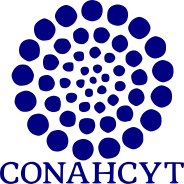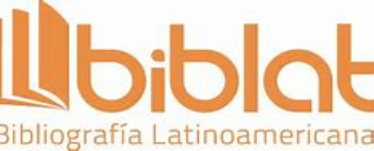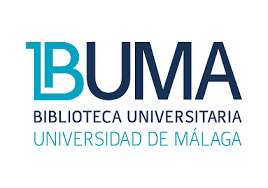ISOLATION OF A BIOACTIVE PROTEIC FRACTION OF Solanum marginatum
DOI:
https://doi.org/10.18387/polibotanica.47.10Palabras clave:
antimicrobial, antioxidant, enzymatic activity, proliferative effect, Solanum marginatumResumen
Solanum marginatum belong to the family of Solanaceae, is widely used in traditional Mexican medicine. However, their properties have not been evaluated; so that in this study we tested some biological activities of a protein fraction of S. marginatum. For this, proteins were extracted from S. marginatum leaves, a protein fraction isolated by FPLC, protein content quantified by BCA method, an enzyme activity assay performed by Kunitz method, protein sub-fractions were identified by SDS-PAGE. The ability to capture radicals was determined by the DPPH and ABTS methods. The toxic effect was assessed with the A. salina assay while cell viability in peripheral blood mononuclear cells (PBMC) was tested by MTT method. Isolation of PF-FPLC was carried out at Rt = 2.13 min, further, separated and identified seven subfractions with molecular weights ranging from 18-112 kDa, while the optimal conditions of enzymatic activity were 37 ° C, pH 7 and 120 min. The ABTS and DPPH methods showed a radical capture percentage of 20 and 62 % respectively.PF-FPLC proteins had no toxic effect in A. salina, however, displayed a low antimicrobial effect (inhibition ≤ 35%) as well as an effect on the cellular viability of PBMC.
Referencias
Ahmed I.A.M.; I. Morishima, E.E. Babiker, and N. Mori. 2009. Characterisation of partially purified milk-clotting enzyme from Solanum dubium fresen Seeds. Food Chemistry, 116(2):395-40
Alfaro-Leon M.L.; G.F. Evans, M.W. Farmen, and S. H. Zuckerman. 2005. Post-transcriptional regulation of macrophage ABCA1, an early response Gene to IFN-Gamma. Biochemical and biophysical research communications, 333(2):596-602.
Antão C.M. and F.X. Malcata. 2005. Plant serine proteases: biochemical, physiological and molecular features. Plant Physiology and Biochemistry, 43(7): 637-50.
Amagase H. and N. R. Farnsworth. 2011. A review of botanical characteristics, phytochemistry, clinical relevance in efficacy and safety of Lycium barbarum fruit (Goji). Food Research International, 44(7): 1702-1717
Batista K. A.; G. L. A Batista, G. L. Alves, and K. F. Fernandes. 2014. Extraction, partial Purification and characterization of polyphenol oxidase from Solanum lycocarpum fruits. Journal of Molecular Catalysis B: Enzymatic, 102: 211-17.
Borsm M.; P.R Michałowicz, P. Sicińska, K. Gulewicz, B. Bukowska. 2012. Studies of biological properties of Uncaria tomentosa extracts on human blood mononuclearcells. J Ethnopharmacol, 142(3):669-78.
Canales M.; T. Hernández, J. Caballero, A. Romo de Vivar, G. Avila, A. Duran, R. Lira. 2005. Informant consensus factor and antibacterial activity of the medicinal plants used by the people of San Rafael Coxcatlán, Puebla, México. J Ethnopharmacol. 97(3):429-39.
Carrasco C.A., and M. Guerra. 2010. Lactosuero como fuente de péptidos bioactivos whey as a source of bioactive peptides. Anales Venezolanos de Nutrición, 23(1): 42-49.
Chang-Bum A.; K. Jeong-Gyun, and J. Jae-Young. 2014. “Purification and Antioxidant Properties of Octapeptide from Salmon Byproduct Protein Hydrolysate by Gastrointestinal Digestion.” Food Chemistry, 147: 78–83.
Chen N.; H.Yang, Y. Sun, J. Niu, and S. Liu. 2012. Purification and identification of antioxidant peptides from walnut (Juglans regia L.) protein hydrolysates. Peptides, 38(2): 344-49.
Déciga-Campos M.; I. Rivero-Cruz, M. Arriaga-Alba, G. Castañeda-Corral, G.E. Angeles-López, A. Navarrete, and R. Mata. 2007.
Acute toxicity and mutagenic activity of mexican plants used in traditional medicine. Journal of ethnopharmacology, 110(2): 334–42.
De Lucca A.J. 2000. Antifungal peptides: potential candidates for the treatment of fungalinfections. Expert Opin Investig Drugs, 9(2):273-99.
de Matos Guedes H. L.; R. Olmo Pinheiro, S. Passos-Chaves, S. G. De-Simone, and B. Rossi-Bergmann. 2010. Serine proteases of Leishmania amazonensis as immunomodulatory and disease-aggravating components of the crude laag vaccine. Vaccine, 28(33): 5491-96.
de Siqueira Patriota L.L.; TF Procópio, J. de Santana-Brito, V. Sebag, de Oliveira A.P.S., de Araújo-Soares A.K., L.R. Moreira, T. de Albuquerque-Lima, T. Soares, T.D. da Silva, PMG Paiva, V.M.B. de Lorena, C.M.L. de Melo, L.P. de Albuquerque, T.H. Napoleão. 2017. Microgramma vacciniifolia (Polypodiaceae) fronds contain a multifunctional lectin with immunomodulatory properties on human cells. Int J Biol Macromol, 103:36-46.
Duarte N.; N. Gyémant, P.M. Abreu, J. Molnár, M.J.U. Ferreira. 2007. The floristic richness of the state of Mexico: licopidos and ferns. Adumbrationes ad Summae Editionem, 57(27): 1-32.
Fu S.L.; Y.H. Hsu, P.Y. Lee, W.C. Hou, L.C. Hung, C.H. Lin, C.M. Chen, Y.J. Huang. 2006. Dioscorin isolated from Dioscorea alata activates TLR4-signaling pathways and induces cytokine expression in macrophages. Biochem Biophys Res Commun, 339(1):137-44.
García, M. C.; P. Puchalska, C. Esteve, and M.L. Marina. 2013. Vegetable Foods: A Cheap Source of Proteins and Peptides with Antihypertensive, Antioxidant, and Other Less Occurrence Bioactivities. Talanta, 106: 328–49.
Guevara M. G.; Oliva C.R., M. Huarte, and G. R. Daleo. 2002. An Aspartic Protease with Antimicrobial Activity Is Induced after Infection and Wounding in Intercellular Fluids of Potato Tubers. European Journal of Plant Pathology, 108(2): 131-37.
Guevara M.G.; C.R. Oliva, M. Machinandiarena, and G. R Daleo. 1999. Purification and Properties of an Aspartic Protease from Potato Tuber That Is Inhibited by a Basic Chitinase. Physiologia Plantarum, 106(2): 164-69.
Harris D.C. 2003. Análisis químico cuantitativo. Editorial Reverté. 2a edición. pp 627.
Jeong J.B.; B.O. De Lumen, and H. J. Jeong. 2010. Lunasin peptide purified from Solanum nigrum l. protects DNA from oxidative damage by suppressing the generation of hydroxyl radical via blocking fenton reaction. Cancer Letters, 293(1): 58-64.
Kaewpiboon C.; K. Lirdprapamongkol, C. Srisomsap, P. Winayanuwattikun, T. Yongvanich, P. Puwaprisirisan, J. Svasti, and W. Assavalapsakul. 2012. Studies of the in Vitro Cytotoxic, Antioxidant, Lipase Inhibitory and Antimicrobial Activities of Selected Thai Medicinal Plants. BMC Complementary and Alternative Medicine, 12: 217.
Kim J. Y.; S.C. Park, I. Hwang, H. Cheong, J. W. Nah, K. S. Hahm, and Y. Park. 2009. Protease Inhibitors from Plants with Antimicrobial Activity. Int J Mol Sci, 10 (6): 2860-2872.
Konozy E.H.; H. Rogniaux, M. Causse, and M. Faurobert. 2013. Proteomic analysis of tomato (Solanum lycopersicum) secretome. J Plant Res, 126(2): 251–66.
Kubienová L.; D. Kopečný, M. Tylichová, P. Briozzo, J. Skopalová, M. Šebela, M. Navrátil. 2013. Structural and functional characterization of a plant S-nitrosoglutathione reductase from Solanum lycopersicum. Biochimie, 95(4): 889-902.
Kasemwattanaroj P., Moongkarndi P., Pattanapanyasat K., Mangmool S., Rodpai E., Samer J., Konlata J, Sukapirom K. 2013. Immunomodulatory activities of alpha-mangostin on peripheral blood mononuclear cells. Nat Prod Commun. 8(9):1257-60.
Kumari M.; Sharma A., and M.V. Jagannadham. 2012. B. Religiosin, a Milk-Clotting serine protease from Ficus religiosa. Food Chemistry, 131(4):1295-1303.
Liu Y.W.; H. F. Shang, C. K. Wang, F.L. Hsu, and W.C. Hou. 2007. Immunomodulatory activity of dioscorin, the storage protein of yam (Dioscorea alata Cv. Tainong No. 1) tuber. . Food Chem Toxicol, 45(11): 2312-18.
Liu Y.W.; Han C.H., Lee M.H., Hsu F.L., and Hou W.C. 2003. Patatin, the tuber storage protein of potato (Solanum tuberosum L.), exhibits antioxidant activity in vitro. J Agric Food Chem, 51(15):4389-93.
Llorente B.E.; W.D. Obregón, F.X. Avilés, N.O. Caffini, and S. Vairo-Cavalli. 2014. Use of artichoke (Cynara scolymus) flower extract as a substitute for bovine rennet in the manufacture of Gouda-type cheese: characterization of aspartic proteases. Food Chem, 159: 55-63.
Lynch B.; R.R. Simon, F.M. van Otterdijk, H.H. Emmen, M.L. Giuseppin, and C. Kemme-Kroonsberg .2012.Subchronic toxicity evaluation of potato protein isolates. Food Chem Toxicol. 50(2):373-384.
Mazorra-Manzano M.A.; J.M. Moreno-Hernández, J.C.Ramírez-Suarez, M.J. Torres-Llanez, A.F. González-Córdova, B. Vallejo-Córdoba. 2013. Sour orange Citrus aurantium L. flowers: a new vegetable source of milk-clotting proteases. LWT - Food Science and Technology, 54 (2): 325-330
Meng Q.X.; R.H. Roubin, J.R. Hanrahan. 2013. Ethnopharmacological and bioactivity guided investigation of five TCM anticancer herbs. J Ethnopharmacol. 148(1):229-238.
Mendieta J.R.; M.R. Pagano, F.F. Muñoz, G.R. Daleo, M.G. Guevara. 2006. Antimicrobial activity of potato aspartic proteases (StAPs) involves membrane permeabilization. Microbiology. 152(Pt 7):2039-47.
Menegassi A.; G.E. Wassermann, D. Olivera-Severo, A.B. Becker-Ritt, A.H. Martinelli, V. Feder, C.R. Carlini. 2008.Urease from cotton (Gossypium hirsutum) seeds: isolation, physicochemical characterization, and antifungal properties of the protein. J Agric Food Chem, 56(12):4399-405.
Mohamed-Ahmed I.A.; I. Morishima, E.E. Babiker, N. Mori. 2009. Dubiumin, a chymotrypsin-like serine protease from the seeds of Solanum dubium Fresen. Phytochemistry. 70(4):483-491.
Nirmal S.A.; A.P. Patel, S.B. Bhawar, S.R. Pattan. 2012. Antihistaminic and antiallergic actions of extracts of Solanum nigrum berries: possible role in the treatment of asthma. J Ethnopharmacol. 142(1):91-7.
Jegathambigai R.N.; I. Rusli, and S. Sreenivasan. 2014. Acute oral toxicity and brine shrimp lethality of methanol extract of Mentha spicata L (Lamiaceae). Tropical Journal of Pharmaceutical Research, 13 (1): 101-107.
Ordóñez R.M.; I.C. Zampini, F. Rodríguez, F. Cattaneo, J.E. Sayago, M.I. Isla. 2011. Radical scavenging capacity and antimutagenic properties of purified proteins from Solanum betaceum fruits and Solanum tuberosum tubers. J Agric Food Chem. 59(16):8655-8660.
Rzedowski, G.C., and J. Rzedowski. 2005. Flora fanerogámica del Valle de México. Institute of Ecology and Conabio. phanerogam J. Patzcuaro, Michoacan, Mexico. (Edición digital: INECOL 2010). pp 672.
Sánchez Y.; Correa T.M., Abreu Y., Martínez B., Duarte Y., and Pino O.2011. Chemical characterization and antimicrobial activity of the essential oil of Piper marginatum Jacq. Rev. Protección Veg. 26 (3):170-176.
Sanabria Galindo A.; López S.I., and R. Gualdrón. 1997. Estudio fitoquímico preliminar y letalidad sobre Artemia salina de plantas colombianas. Rev. Col. Cienc. Quím. Farm, 26:15-19.
Sarmadi B.H., and A. Ismail. 2010. Antioxidative peptides from food proteins: a review. Peptides. 31(10):1949-1956.
Shamsi T.N.; R. Parveen, S. Fatima. 2016. Characterization, biomedical and agricultural applications of protease inhibitors: A review. Int J Biol Macromol. 91:1120-33.
Tavares L.S.; M .de O Santos, L.F. Viccini, J.S. Moreira, R.N. Miller, O.L. Franco. 2008. Biotechnological potential of antimicrobial peptides from flowers. Peptides, 29(10):1842-1851.
Tironi V., and M.C. Añón. Amaranth proteins as a source of antioxidant peptides: Effect of proteolysis. Food Research International, 43(1): 315-322.
Townsend D.M., K.D. Tew, H. Tapiero. 2003. The importance of glutathione in human disease. Biomed Pharmacother. 57(3-4):145-155.
Vallés D.; S. Furtado, C. Villadóniga, and A.M.B. Cantera. 2011. Adsorption onto alumina and stabilization of cysteine proteinases from crude extract of Solanum granuloso-Leprosum Fruits. Process Biochemistry, 46(2): 592-598.
van der Hoorn R.A. 2008. Plant proteases: from phenotypes to molecular mechanisms. Annu Rev Plant Biol.,59:191-223.
Vega-Ávila E., Velasco-Lezama R., Jiménez-Estrada M. 2006. Plants as a source of antineoplastic compounds. Biochemistry, 3(31): 97-111.
Verpoorte R. 1998. Exploration of nature's chemodiversity: the role of secondary metabolites as leads in drug development. Drug Discovery Today, 3(5): 232-238.
Villaseñor J.L. 2016. Checklist of the Native Vascular Plants of Mexico. Rev. Mex. Biodiv. 87(3): 559-902.
Villaseñor-Rios J. L., and F.J. Espinosa-García. 1999. Catálogo de malezas de México. Fondo de Cultura Económica.1 Edición. pp.448.
Wang B.S., L.W. Chang, H.C. Wu, S.L. Huang, H.L. Chu and M.H. Huang. 2011. Antioxidant and antityrosinase activity of aqueous extracts of green asparagus. Food Chemistry, 127(1):141–146.
Wang L.; Y. Li, L. Zhu, R. Yin, R. Wang, X. Luo, Y. Li, Y. Li, Z. Chen. 2016. Antitumor activities and immunomodulatory of rice bran polysaccharides and its sulfates in vitro. Int J Biol Macromol. 88:424-32.
Yeaman M.R., and N.Y. Yount. 2003. Mechanisms of antimicrobial peptide action and resistance. Pharmacol Rev. 55(1):27-55.
Yeap S.K.; N.B. Alitheen, A.M. Ali, A.R. Omar, A.R. Raha, A.A. Suraini, and A.H. Muhajir. 2007. Effect of Rhaphidophora korthalsii methanol extract on human peripheral blood mononuclear cell (PBMC) proliferation and cytolytic activity toward HepG2. J Ethnopharmacol. 114(3):406-11.
Zhao J.; L. Guo, H. Zeng, X. Yang, J. Yuan, H. Shi, Y. Xiong, M. Chen, L. Han, D. Qiu. 2012. Purification and characterization of a novel antimicrobial peptide from Brevibacillus laterosporus strain A60. Peptides. 33(2):206-211.
Zheng L.; H. Dong, G. Su, Q. Zhao, and M. Zhao. 2016. Radical scavenging activities of Tyr-, Trp-, Cys- and Met-Gly and their protective effects against AAPH-induced oxidative damage in human erythrocytes. Food Chem., 197(Pt A):807-813.
Descargas
Archivos adicionales
Publicado
Número
Sección
Licencia

Polibotánica por Departamento de Botánica de la Escuela Nacional de Ciencias Biológicas del Instituto Politécnico Nacional se distribuye bajo una Licencia Creative Commons Atribución-NoComercial-CompartirIgual 4.0 Internacional.




















